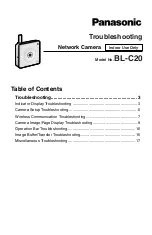
C-3
Cisco Aironet 1200 Series Access Point Hardware Installation Guide
OL-8370-04
Appendix C Access Point Specifications
Power Output
Autonomous access points:
•
With 802.11b radio:
100, 50, 30, 20, 5, or 1 mW
•
With 802.11g radio:
100, 50, 30, 20, 5, or 1 mW
(at 1, 2, 5.5, and 11 Mbps)
30, 20, 10, 5, or 1 mW
(at 6, 9, 12, 18, 24, 48, and 54 Mbps)
Lightweight access points:
•
At 1, 2, 5.5, and 11 Mbps
100 mW (20 dBm)
50 mW (17 dBm)
25 mW (14 dBm)
10 mW (11 dBm)
5 mW (8 dBm)
3 mW (5 dBm)
1 mW (2 dBm)
0.5 mW (-1 dBm)
•
At 6, 9, 12, 18, 24, 48, and 54 Mbps
30 mW (15 dBm)
15 mW (12 dBm)
8 mW (9 dBm)
4 mW (6 dBm)
2 mW (2 dBm)
1 mW (–1 dBm)
(Depending on the regulatory domain in
which the access point is installed)
Autonomous access points:
•
RM20A radio module:
16 dBm
13 dBm
10 dBm
7 dBm
•
RM21A radio module or RM22A radio module:
17 dBm
15 dBm
14 dBm
11 dBm
10 dBm
8 dBm
5 dBm
2 dBm
–1 dBm
Lightweight access points:
•
RM21A radio module or RM22A radio module:
17 dBm
14 dBm
11 dBm
8 dBm
5 dBm
2 dBm
–1 dBm
Note
These values are based on the FCC peak
measurement method as defined in
FCC 15.407 (A)(4)
(Depending on the regulatory domain in which the
access point is installed)
Table C-1
Access Point Specifications (continued)
Category
Access Point with 802.11b or 802.11g Radio
Access Point with 802.11a Radio Module
















































